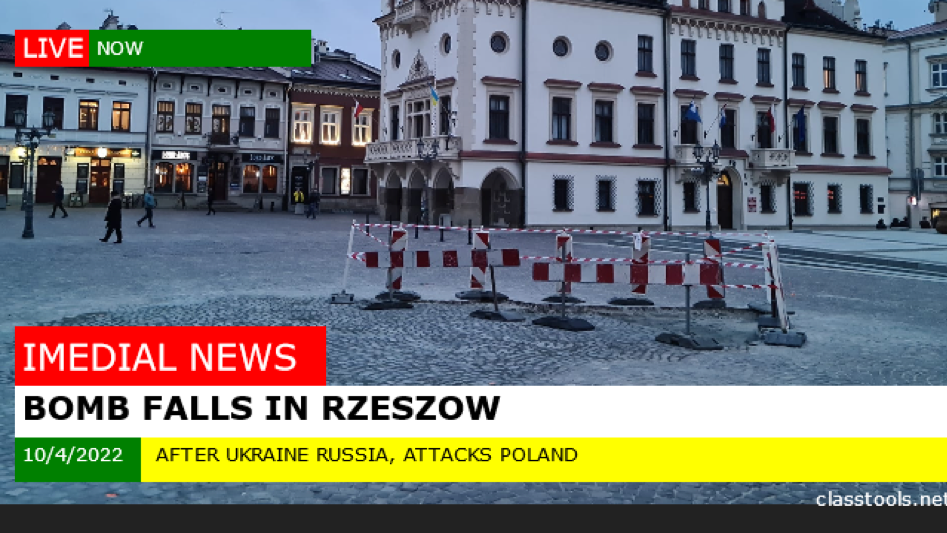Article by E&D
This article was created to show you how easy it is to create fake news, hence how careful you should be about what you see. This news piece above (obviously a fake) was created in just 2 minutes! It’s as easy as to have a picture that could be easily misinterpreted and turn into a hot story, playing on people´s fear or existing conspiracy theories.
There are plenty of websites where people can turn their “hot stories” into realistically looking FAKE news pieces, using patterns we are all used to see and accept as real, as we see similar designs coming from major news channels. The presented fake was inspired by already existing in some regions rumours/misinformation that Poland is involved in a war with Russia related with Russian invasion on Ukraine, which was a result of misinformation spread worldwide by individuals and media. While, Poland is completely war free, the picture above is real, taken in Rzeszow, a Polish town near to Ukrainian boarder and presents a simple hole in the pavement made for maintenance purposes. But imagine how easy it would be to make people believe that it really happened, and that the Russian attacks has crossed the EU boarder, and imagine the panic and consequences!
That’s why we all need to think critically about what we see/read and from what source it comes to us, as much as what we publish.
According to IPSOS[1] that inquired 25000 people from 25 countries, four out of five citizens (89%), believe that they were already exposed to fake news. From those almost nine out of ten (86%), said that they initially believed that the news is real, at least once. The misinformation is embedded deep in the social media, mostly in Facebook, two/thirds (67%) of inquired people reported already encountering fake news in this platform. Other sources of fake news are, social media platforms (65%), websites (60%), Youtube (56%) and television (51%).
[1] https://www.ipsos.com/en-us/news-polls/cigi-fake-news-global-epidemic

